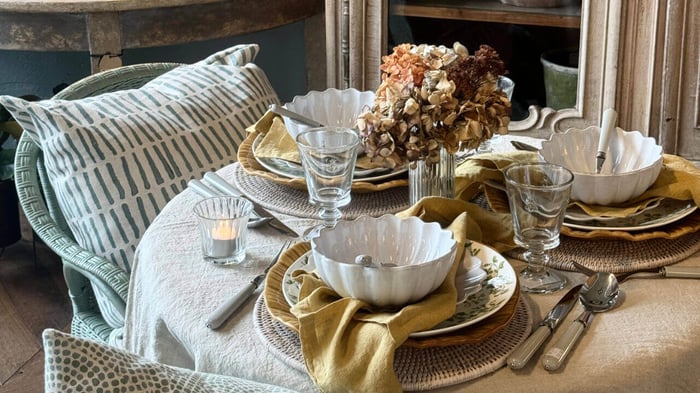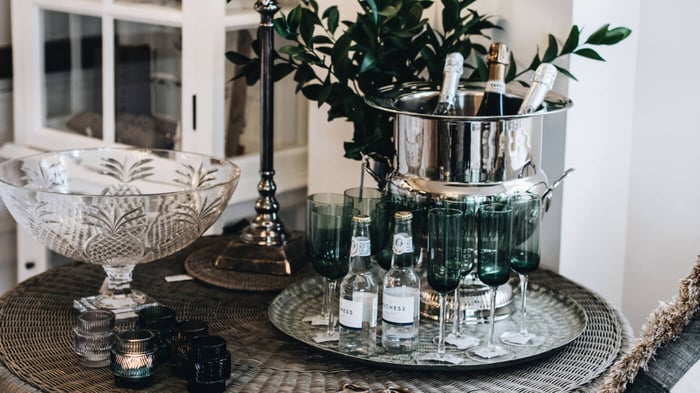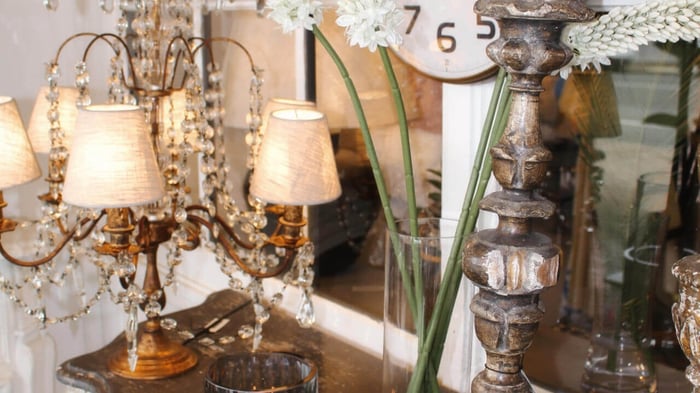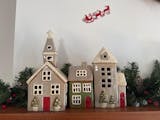Artwork is more than mere decoration in interior design; it plays an essential role in adding depth and personality to a room.
Spanning various mediums such as traditional oil portraits, still life pieces, contemporary abstract works, photography, textiles, and more, these artistic elements inject spaces with identity, aesthetic allure, and a hint of history and warmth.
The New York School of Design emphasizes the significance of art, observing that a room lacking in paintings, prints, and decorative objects often appears incomplete or impersonal.
While foundational elements like furniture, flooring, wall finishes, and lighting establish a room's core structure, it's the art and decorative items that truly inject meaning into a home. This is particularly true when these items are chosen and displayed thoughtfully, reflecting personal stories and emotional connections.
SHOP THE COLLECTION

Choosing Art for Your Home
In selecting artwork, consider harmony and balance through repetition, rhythm, symmetry, and coordinating pieces by colour, shape, or design style.
Art by Interior Design Style:
-
Belgian Style: Balance contemporary abstract art with old oil portraits, still life scenes, or chippy panoramic wallpapers, either unframed or in simple timber frames.
-
British Colonial Style: Art choices include framed botanical, floral, and animal prints, as well as vintage maps and panoramic wallpapers to create a fresh and stylish look throughout the home. Handwoven and natural artworks of wall-mounted baskets and shell art evoke a feeling of travel and adventure.

-
Classic Contemporary Style: Choices include contemporary, framed abstract, and monochromatic works, as well as black and white photography, detailed architectural sketches, and botanical drawings.
-
Coastal Style: Display collections of vintage family photos, framed vintage watercolour & coastal landscape art, nautical life prints, framed dried sea fans, and woven baskets.
Country Style: Watercolour and sketched botanical prints, oil portraits, decorative wallpapers, and smaller framed vintage still-life and landscape compositions.
-
Dark Academia: Wall art consists of vintage floral and botanical illustrations, old oil portraits, and paintings exhibiting religious mythology, classic motifs, and anatomical studies. You can even create your own artwork, by framing hand-written calligraphy, pressed botanicals, newspaper cut-outs, or old maps, in sleek black or vintage gilt frames.

-
Hamptons Style: Collections of botanical, nautical, natural history and tropical framed prints and photographs in slender timber or faux bamboo silver frames.
-
Parisian Style: 17th-century oil paintings, still life portraits, marble or porcelain sculptures, wall murals and large tapestries can be contrasted with contemporary abstract paintings and beaded antique silver mirrors to accentuate their character.
-
Traditional Style: Artwork tends to showcase classical themes like landscapes, portraits, or still-life paintings. Some ideas include antique or vintage oil portraits, tapestries featuring classical motifs, framed botanical or architectural drawings and prints, and large-scale scenic landscapes.
-
Transitional Style: Opt for one to two large pieces of art instead of a collage of multiple smaller pieces. Ideas include framed abstract art, contemporary black-and-white photography, & modern acrylic canvas art showcasing bold pops of colour.

Placement and Installation
Optimal Placement
- Mounted on empty walls
- Positioned over prominent furniture items
- Along hallways or staircases: perfect for creating a gallery wall
- In alcoves or compact spaces
- Amongst bookshelves: integrate small artworks with books.
- On shelving: place framed pieces at the front edge of shelves.

Tips for Styling Art Above Furniture
-
Make sure the piece of art is half to two-thirds the width of the furniture piece below it, but never longer than the furniture width.
-
Leave 15-25 centimetres of space between the bottom of the frame and the top of the furniture below it. This visually connects the art to the furniture without having it float too high.
-
Consider the scale and proportions of the furniture and surrounding space when determining the size of the artwork. Larger pieces are usually better to avoid the art looking too small.
-
Pay attention to things like headboards or sideboards when choosing a size - the art should relate well in scale to the defining pieces below it.
-
Make sure the artwork placement still allows the furniture to be seen and function well in the space. Don't cover up important design elements.

Before you hang your piece, we recommend checking the back of the piece to see which hanging hardware it has. This may include hanging wire, D rings, or a sawtooth hanger.
-
For hanging light-weight pieces: invest in a pack of small nails. Avoid buying nails that are too big for your D rings.
-
Medium-weight pieces: If it weighs more than a few kg, buy some picture hangers.
-
Heavier pieces: For heavy pictures, use a big nail, a stud finder or wall-plug anchors, screws, and a screwdriver.
-
Tile or glass surfaces: Use adhesive hooks instead of nails and screws. For brick surfaces, use brick clamps.

Other Ideas:
- Traditional picture hooks
- Adhesive hooks or strips
- Picture rails
- Shelves and brackets
- For flexibility, especially in rentals, consider resting artwork on ledges, atop consoles, or directly on the floor.

Placement
Once you have determined how you will hang your art, determine exactly where on the wall you will place your artwork.
Some general guidelines include:
- The centre of the artwork should be between 150 and 160 centimetres from the ground up along the wall, which is at about eye level for most people.
- When hanging multiple pictures on a wall, it's generally recommended to leave a gap of 5-13 centimetres (2-5 inches) between each picture. This spacing helps create visual balance and allows each picture to be appreciated individually. However, you can adjust the distance based on your personal preference and the size of the pictures.
- Before finalising your arrangement, mock up the design using paper templates. This allows for fine-tuning before the actual hanging of pieces.

Other Arrangement Considerations Include:
- Symmetrical
- Grid-like
- Asymmetrical
Symmetrical arrangements, where pictures are evenly spaced and mirror each other, can provide a sense of order and formality. Asymmetrical arrangements, with varying spacing and picture sizes, can create a more dynamic and eclectic look.

Framing Considerations
The frame's colour, size, material, and style is a key element that has a significant impact on the artwork's appearance.
While we recommend consulting a professional framer, some ideas include:
-
Ornate gilded frames for a classic, antique, or vintage aesthetic.
-
Dark, intricately carved wooden frames.
-
Sleek matte black or metallic frames.
-
Frameless for a contemporary edge.
Reframing existing pieces in uniform frames will also help to create visual cohesion among different pieces of art.
Artwork and Lighting
A frequently overlooked aspect of art display is lighting, which is critical for showcasing art effectively.
Consider various lighting options, such as recessed lights, track lighting, individual picture lights, or wall sconces, to highlight your artwork appropriately.
Gallery Art Light Wall Sconce | Antique Brass | W33cm, Depth 19cm

$570.00
STORE PICK UP/LOCAL DELIVERY ONLY/FREIGHT QUOTE ON APPLICATION Due to the size and weight of this piece we are unable to offer our regular Australia wide delivery. For Australia-wide deliveries, a freight quote does apply for this piece.This is not calculated online… read more
The Wall Behind the Artwork
The wall where art is hung should also be carefully considered, as it influences the overall visual impact.
Whether your walls are neutral, boldly patterned, dark or light, or adorned with architectural details like mouldings or wainscoting, these features are integral to the final presentation of your artwork, harmonizing or contrasting with the pieces and their frames.
Have more questions about artwork? Let us know in the comments below, or email us at emma@suzieandersonhome.com for future blog suggestions!







